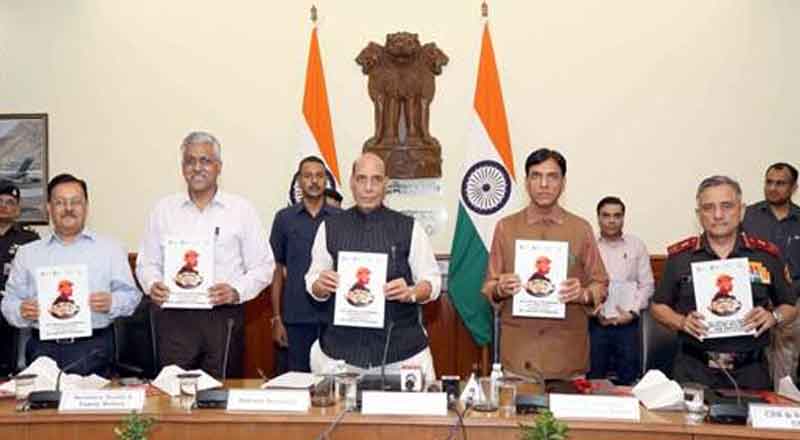The idea of “one country-one tax” was brought closer to reality when the GST Bills were passed in Rajya Sabha in August last year. If implemented well, GST will go down in India’s financial history as the largest tax overhaul that will create great opportunities for the citizens –
After the passage of India’s biggest tax reform, the GST Bill in the Rajya Sabha on 3rd August, 2016, the Government has rolled out its sleeves to replace all the indirect taxes levied on goods and services by the Centre and States with just 1 tax – the Goods & Services (GST) Tax. The Bill was once again introduced in the Lok Sabha for ratification of the amendments, followed by its ratification by at least 15 states.
A 21-members select committee was then formed to look into the proposed GST law. This resulted in the State and Union Territory GST laws being passed by all the states and Union Territories of India eventually, except Jammu & Kashmir, paving the way for smooth rollout of the tax from 1 July 2017. The idea of “one country-one tax” is seen becoming a reality gradually.
Talk of any industries, be it automobile or ancillary industries, FMCG, telecom, real estate, financial services, heavy machineries, exporters and importers or garment manufacturers, this tax-led change is seen to be having a wide-ranging impact on their business decisions and structures in the near future.
A peek into GST…
GST will be a game-changer in the Indian economy as it is going to develop a single Indian market and reduce the cascading effect of tax on the cost of goods and services. It will impact the Tax Structure, Tax Incidence, Tax Computation, Tax Payment, Compliance, Credit Utilization and Reporting, leading to a complete overhaul of the current indirect tax system.
GST will subsume various indirect taxes including central excise duty, services tax, additional customs duty, surcharges, state-level value added tax and Octroi. It is also estimated to boost GDP by 1-2 per cent and bring down inflation by 2 per cent over the long term.
All goods and services have been put in the slabs of 5, 12, 18 and 28 per cent, with the exception of gold and precious metals, which will attract 3 per cent GST, and rough diamond at 0.25 per cent GST. Items like salt, milk, gur (jaggery), egg, curd, unpacked foodgrain and paneer, fresh vegetables, unbranded atta, maida, besan, honey, besides education and health services, have all been exempted from GST.
According to the fitment of rates in various tax brackets, 81 per cent of the items will fall in/below 18 per cent slab. Only 19 per cent of the goods will attract GST above 18 per cent. While tea, sugar, coffee beans, edible oil, packed paneer, milk powder, brooms, domestic LPG and kerosene have been put in the 5 per cent bracket, hair oil, soaps, jams, soups, ice cream, capital goods and computers will attract an 18 per cent levy. Those placed in the 28 per cent slab are custard powder, shampoo, perfume, make up items, chewing gum, motorcycle, cement and consumer durables.
On speaking on how GST will be beneficial in promoting a level playing field, Shri Arjun Ram Meghwal, Hon’ble Union Minister of State for Finance, Government of India, said, “GST will give an overall boost to supply. With India’s biggest tax reforms of the 21st century, the country will be known for its leadership, and the year 2017 will be marked for bringing wholesome economic betterment.”
GST will also require a very high level of compliance. The introduction of the new tax reform is drawing Indian businesses into digital economy, which is further pushing traders and business owners to brace IT infrastructure, in order to fulfill the compliance needs for GST. Gone are those days when hand-written ledgers, accounting books and notepads used to rule a taxpayer’s tax rulebook. With GST, everything will now be online and will need to be updated regularly. A business will have to file 37 returns in a year (three returns per month and one annual return) per state. If it does business from offices in multiple states, the number of returns will go up accordingly. Electronic matching of input tax credits all across India would also make the process more transparent and accountable.
For filing GST and doing business in the GST regime, the government is made it mandatory to register with the Goods and Services Tax Network (GSTN). Businesses will have to upload monthly supply data as well as file return forms on this portal. The GST portal has already opened two windows for enrolments – first between November 8 to April 30 and then from June 1 to June 15. This is to allow all taxpayers enough time to migrate to the new regime.
It is also said that in future, the government will start rating companies and businesses on the basis of how well they have complied with the GST rules.
GSTN is a non-profit organization formed to create a platform for all the concerned parties i.e. stakeholders, government, taxpayers to collaborate on a single portal. The portal will be accessible to the central government which will track down every transaction done while the taxpayers will be having a vast service to return file their taxes and maintain the details.
Preparedness for GST roll-out…
Come July 1st and the new GST regime will be rolled out as planned across the country. To cope up with the transition to a completely new tax environment, corporates and business are getting ready and helping its customers and partners migrate to the new GST regime by either introducing GST ready products or organizing GST training sessions for a smooth transition.
Same goes with the different ministries in the government. For instance, in order to ensure preparedness for GST implementation, the Ministry of Electronics & Information Technology has launched a dedicated Webpage for facilitating taxpayers with regard to addressing issues related to Information Technology Services & Electronics goods. Individuals, Companies and Entrepreneurs in IT & Electronics sector can visit the webpage for sector-specific information and can also file grievances in relation to implementation of GST.
For smooth roll-out of GST, 18 Sectoral Groups have also been constituted representing various sectors of the economy. These 18 Sectoral Groups representing various sectors of the economy and containing Senior Officers of the Centre and the States is believed to timely respond to the issues and problems of their respective Sector(s), try to resolve them and highlight specific issues for the smooth transition of the respective sector to the GST regime. Concerned industry Groups/Associations or even individual industry representative(s) may approach the respective Sectoral Group officers with their problems, if any, relating to GST implementation.
The 18 sectoral Groups include Banking, Financial & Insurance, Telecom , Exports (including EOUs and SEZs), IT & ITeS, Transport & Logistics, Textiles, MSMEs (incl. job work), Oil & Gas (upstream & downstream), Gems & Jewellery, Services received and provided by Government, Food Processing, E-commerce, Big Infrastructure (Airport & Sea ports including Maintenance, Repair & Overhaul, Power Sector, Housing and Construction), Travel & Tourism, Handicrafts, Media & Entertainment, Drugs & Pharmaceuticals and Mining.
To help the people register themselves to the new GSTN portal smoothly, GSTN has also released three videos just after the opening of the portal for GST registration.
However, insiders say that 70% of India’s small, mid-sized firms are yet to start GST preparations. Due to uncertainty in the rules and compliances, these small companies had been postponing the exercise required to move towards adopting the new system.
And so…
It has been a long arduous journey before the GST Bill could see the light of the day. During its journey, the bill had been in the cauldron of political and economic debates several times, even stalling Parliament sessions on several occasions over refusal to pass it without further ratifications. The GST Council Meets for the last 6 months thrashed out solutions for a smooth rollout, but now the decks are cleared for its imposition. It is left to be seen of what its implications would be post July 1st and how soon the business houses, both large and small come to terms with this new regime and support its implementation with heart and soul.
Samrita Baruah
samrita@spoindia.org





